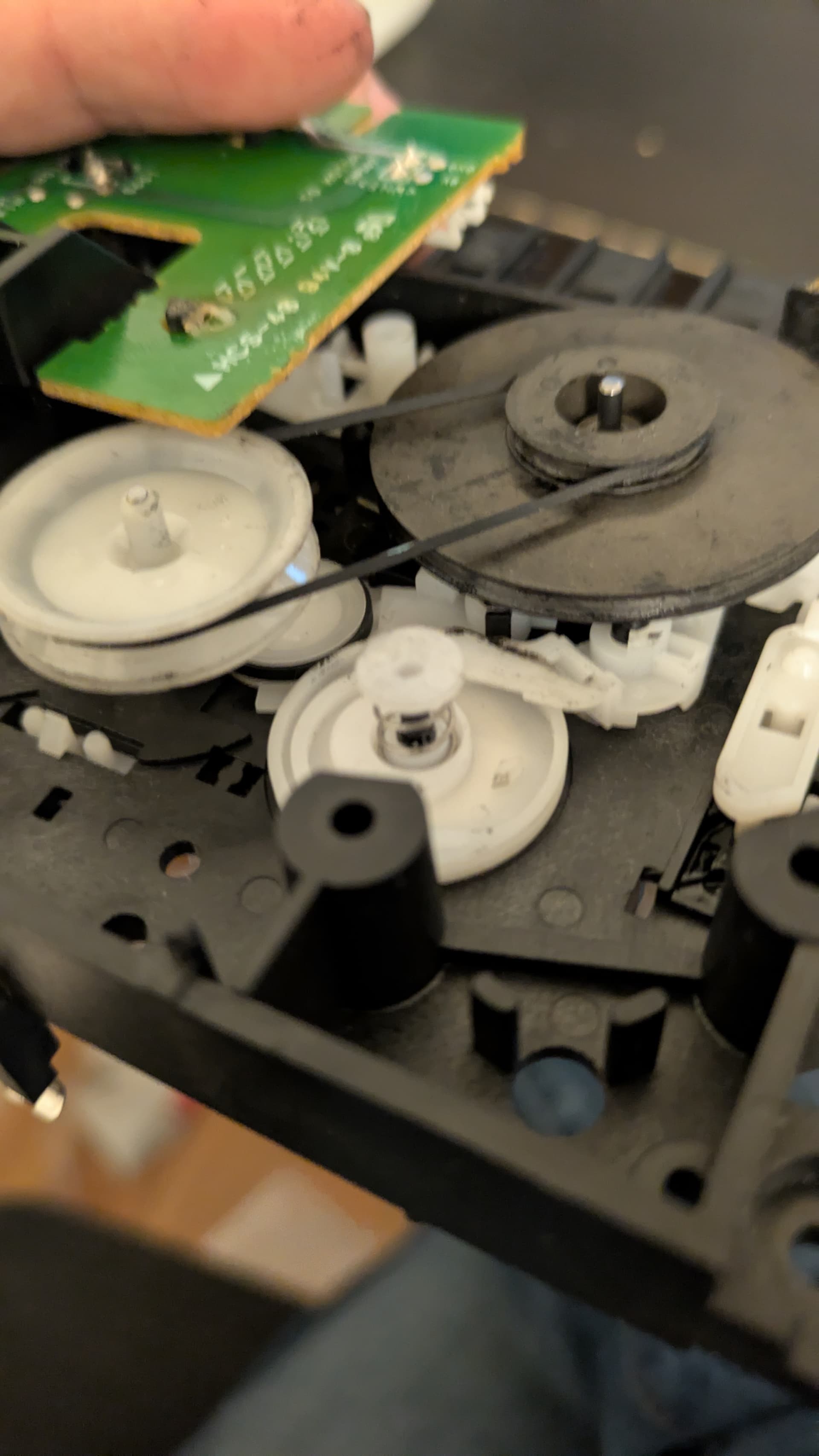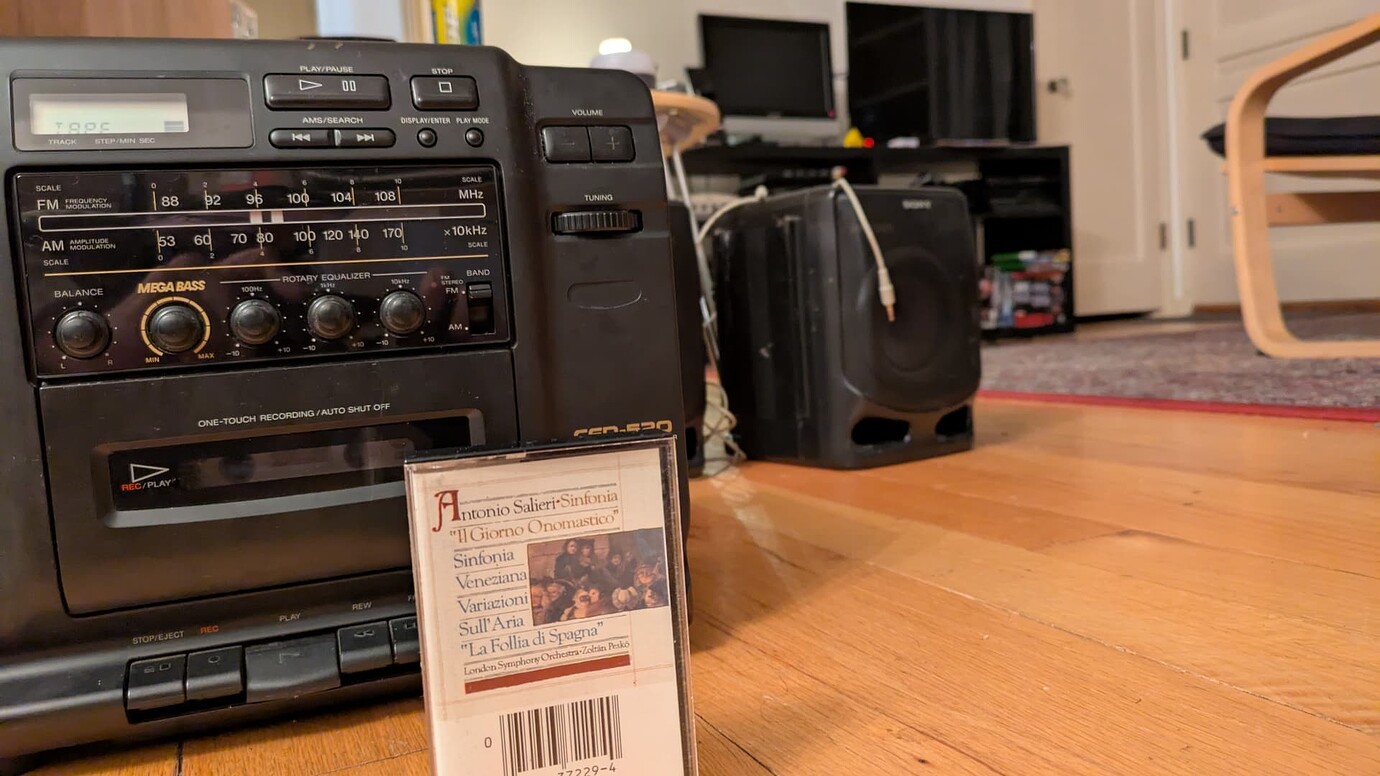Fixing a stereo
Last week I found a cheap boombox at Goodwill and as is someone is wont to do I bought it and carried it home. Thankfully someone at Goodwill had plugged it in to test and the radio and CD player worked. all that was left was to verify the cassette mechanism was busted, and it very much was.
This particular model is a Sony CFD 520. Almost no information is available online except for Sony's archive of user manuals. It has a humble single cassette deck instead of two. This is a relic from the 90's when people had small cheap personal stereos that mainly occupied bedrooms and later garages and basements. We have bluetooth speakers now and Spotify. Speaker tech has advanced a lot, I have a bluetooth speaker from IKEA that sounds much better than the stereo does if I am being honest. Another feature this stereo prominantly advertises is the Super Bass. There is a rotory equalizer with three settings. You can plug a microphone into the back and use it as a PA system. You can also record off a CD to a tape if you really wanted to.
I had to buy an extra long phillips head screwdriver to get the thing open, and I specifically bought mine at a local hardware store instead of whatever garbage is on amazon, because everything on amazon that isn't a brand name is absolute garbage. What I had to buy on amazon were belts - the mechanism is belt driven - and the best option is to buy a bag of hundreds of differently sized belts and fish through them for a suitable size. This is cheaper than trying to find the exact fit and because no information on what belts this thing uses - even in the user manual - it's really the only option.
The cassette mechanism itself is wholly contained except for plugging into the stereo's main circuitboard. The motor is held on by a metal plate, which also holds the axles for the two pulleys. The belts had completly melted in the last 30 years and were the consistancy of tar. I used a ton of paper towels and isopropl alcohol to clean all of them as best as I could. I wasn't sure how it was going to go back together, since one belt loop overlaps another, but the plastic casing has two tabs that the assembler is supposed to wrap the belts around - so that the motor and plate can go back over top - and one can go back in with tweezers to place the belt on the motor to complete assembly.
The first time I reassembled it I didn't align the buttons on the front with the leavers on the cassette, so when I pressed play it got stuck. After aligning everything I stuck a tape in and it played - for a few seconds before the tape jammed. The capstain was rotating, advancing the tape - but the main tape roller was not rotating. So I had to disassemble it again and figure out why. I figured a belt had been twisted and it was causing the pulleys to slip, but the belts had rolled themselves even.

In the processe of taking it out again, providence smiled upon me and a small spring and plastic button fell out, I didn't think I would find where these would go at first but figured they weren't vital to the cassette operation. I spent a half hour rotating the pulleys by hand trying to figure out why the back part of the pully would rotate but not the front. Turns out the spring fits on the back of it, providing enough tension to pull the tape but if there's too much a small lever activates and the auto-stop is activated. I wonder how the spring was supposed to be mounted, and a youtube video had a few frames showing the back of a similar Sony cassette stereo mechanism - which revealed that the button held it in place - with glue. I suspect this is originally why the stereo failed - it probably ate someone's tape. A dab of elmer's glue later held the button in place. I rotated the pulleys and everything seemed to rotate correctly. I assembled the mechanism for about the 5th time and placed it back in the stereo. And: Music

I thought a lot about the people who designed this stereo and how they optimized for using the least amout of plastic, but also how the plastic bends and provides spring like tension in certain places. They also provided - mercifully - a way to service and reassemble the mechansim despite figuring nobody would ever want to. It reminded me of code, not because it was elegant, but because there is so many weird mechanisms and levers to transfer force and make things click into place despite themselves. I also thought about the people assembling it, having to possibly make hundreds of these a day and doing the same thing I was trying to do, but much faster.
Really wish I could report that it plays tapes like a champ but on longer tapes - like Fleetwood Mac's Double PL Tusk - it struggles to play later songs. There's still significant tape warble, and i wonder if it's the stereo or the band. Maybe I will have to spend more than $15 on a stereo one of these days.